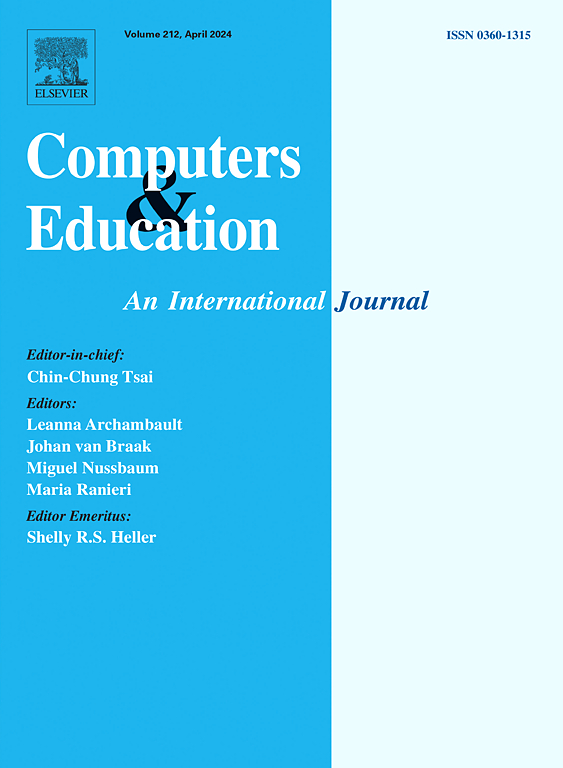Understanding the gender divide in digital literacy in four European countries: A comprehensive decomposition analysis using unconditional quantile regression
IF 8.9
1区 教育学
Q1 COMPUTER SCIENCE, INTERDISCIPLINARY APPLICATIONS
引用次数: 0
Abstract
Digital literacy is crucial for adolescents’ future, yet significant gender divides persist, particularly in Computer and Information Literacy (CIL) and Computational Thinking (CT). This study examines the gender divide in CIL and CT among adolescents in four European countries, highlighting the gender-based disparities in digital literacy development.
Based on ICILS 2018 data, this research identifies factors contributing to gender divides in CIL and CT using regression and decomposition methods. Findings indicate that females outperform males in CIL, while males excel in CT. Gender divides decrease as the percentiles of students’ proficiency levels increase. The explained portion of the gender divide in CIL and CT is consistently smaller than the unexplained portion across countries, suggesting that gender divide or unobserved factors may drive these divides. A comparison of OLS regression results with decomposition approaches indicates that the factors influencing digital literacy development differ from those contributing to the gender divide. Variation in the factors contributing to gender divides is greater across countries than within countries for both CIL and CT.
These findings highlight the need to consider national digital environments and socio-cultural contexts in addressing gender divides in digital literacy. This study offers insights for policymakers and educators to address the gender divide in digital literacy.
求助全文
约1分钟内获得全文
求助全文
来源期刊

Computers & Education
工程技术-计算机:跨学科应用
CiteScore
27.10
自引率
5.80%
发文量
204
审稿时长
42 days
期刊介绍:
Computers & Education seeks to advance understanding of how digital technology can improve education by publishing high-quality research that expands both theory and practice. The journal welcomes research papers exploring the pedagogical applications of digital technology, with a focus broad enough to appeal to the wider education community.
 求助内容:
求助内容: 应助结果提醒方式:
应助结果提醒方式:


